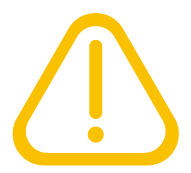CollaborateMD maintains a marker in the payer database that identifies whether a payer accepts secondary claims electronically. When an insurance payment is entered via EOB Auto Apply, the application will look for a remaining balance and whether the claim has a secondary payer. If there is a balance and a secondary payer, the application will change the charge status to “Send to Secondary via Clearinghouse” (as long as the payer is willing to accept electronic secondary claim(s)). If needed, please reference our Payer Agreements Help Article to learn how to submit and review payer agreements.
Once verified that the payer will accept secondary claims electronically and the agreement has been approved, follow the steps below:
Post the payment received from the primary insurance Please reference our Post Payments Help Article for more information on how to post insurance payments..
 Sometimes a payer will send an EOB where the check amount is $0.00. In these instances, a payer acknowledges the charge but will not reimburse you for the service, such as when a client has a deductible. If the patient(s) listed on the EOB have a secondary insurance and the claims can be submitted electronically to the second payer, you must post the $0.00 payment. Otherwise, the claim(s) will be rejected.
Sometimes a payer will send an EOB where the check amount is $0.00. In these instances, a payer acknowledges the charge but will not reimburse you for the service, such as when a client has a deductible. If the patient(s) listed on the EOB have a secondary insurance and the claims can be submitted electronically to the second payer, you must post the $0.00 payment. Otherwise, the claim(s) will be rejected.
Once the payment is posted, change the line item Status under the Charges tab of the Claim to bill the “Secondary Payer via Clearinghouse.”
CMD will automatically send the primary insurance payment details as long as there’s a payment and adjustment made to each line item, even if the payer paid $0.00. The payment information that is transmitted electronically acts as the paper EOB the payer would normally receive.
Important Note:
If the secondary payer does not accept secondary insurance claims electronically, the application will set the charge status to “User Print and Mail”.
Secondary claims can be billed the same day the primary payment is applied, and Tertiary claims can be billed the same day the secondary payment is applied, accelerating reimbursement. It’s important to remember that these claims must be printed and mailed to the payer and the EOB must be attached to the claim.
 Sometimes a payer will send an EOB where the check amount is $0.00. In these instances, a payer acknowledges the charge but will not reimburse you for the service, such as when a client has a deductible. If the patient(s) listed on the EOB have a secondary insurance and the claims can be submitted electronically to the second payer, you must post the $0.00 payment. Otherwise, the claim(s) will be rejected.
Sometimes a payer will send an EOB where the check amount is $0.00. In these instances, a payer acknowledges the charge but will not reimburse you for the service, such as when a client has a deductible. If the patient(s) listed on the EOB have a secondary insurance and the claims can be submitted electronically to the second payer, you must post the $0.00 payment. Otherwise, the claim(s) will be rejected.